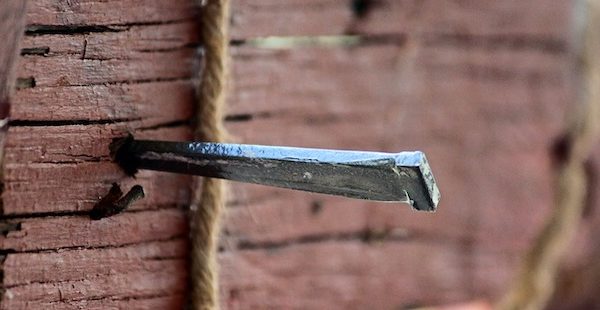
The Process of Crucifixion
Jesus of Nazareth was crucified on a wooden cross, like one of the lowest criminals of his day. It is worthwhile to ponder Jesus’ crucifixion, since it shows how much he humbled himself. As Paul said, he humbled himself ‘to the point of death, even death on a cross’ (Philippians 2:8).
Crucifixion was a penalty specially reserved for the worst of people: slaves, traitors, and the most notorious criminals. It was not an ordinary punishment. Although it could be widespread at certain times, it was always designed to be shocking. It occurred publicly so that others could learn from – and avoid – the crimes of those who had been crucified.
Crucifixion was considered to be, by far, the worst way for someone to die. It was designed to be excruciating, lingering, and shameful. Although the description that follows is graphic, it is only designed to help us understand the sufferings of the Savior.
Crucifixion was excruciating. Prior to crucifixion, the criminal was severely flogged. The Romans had whips with nails and bits of glass tied into the whip, so that it created lacerations along with the sting of the whip. The severest form of flogging, the verberatio, could last for hours and tear off so much flesh that the criminal’s ribs and internal organs were showing.
During crucifixion itself, spikes were placed through the wrist or forearm. An archaeological find in Judea has also found that a spike was sometimes places through the ankles, with the left ankle on the left side of the wooden pole and the right ankle on the right side of the pole, and a metal spike transfixing through ankle, pole, and ankle.
The spikes themselves were likely to cut through many nerves, creating sharp, shooting pains that would throb through one’s arms and legs, just as one feels a ‘zap’ when hitting the ‘funny bone.’ Even the slightest movement would create unbearable pain as the metal rubbed on the exposed and damaged nerves.
Muscle cramps from dehydration and rough treatment added to the pain that spasmed through the sufferer’s body. In order to breath, the criminal would often use his legs to push himself up, helping his rib cage and lungs to expand. This only created more pain, and prolonged the dying the process. The Romans sometimes added a small sedecuola, a piece of wood that functioned like a small ‘chair’ for the victim, helping him to breath more deeply. It was not designed to ease his suffering, but only to prolong it, as he continued to linger on the cross.
Crucifixion was lingering. One did not die immediately. Hanging on a cross does not automatically kill someone. It does, however, exhaust the body, making it harder and harder to breathe. It was common for the Romans to leave the criminal on the cross for hours or even days in order to die slowly – and to finally finish them off with huge sledge-hammer blows to their shins, which broke their legs and caused them to no longer be capable of pushing themselves up to catch their breath.
For many, though, it was not the wounds or trauma that brought death. Being exposed in the outdoors, through the sweltering Mediterranean heat and the frigid nights, created misery. Infection would spread through the untreated wounds. Starvation and a lack of water might also eventually end suffering. In the end, it was often these miseries – rather than the wounds themselves – that killed the victim.
Finally, crucifixion was shameful. Most people who were crucified were stripped of all clothing. The religious decency of Judea possibly allowed the victim to wear a scrap of fabric – but that was about all.
Crucifixion occurred along the main road, so that everyone could observe. The Romans assumed that the horror of crucifixion would prevent crime, and so they often turned their main highways into spectacles of misery: following the defeat of Spartacus and his slave revolt, the Romans crucified 6000 men along one of the roads to Rome, leaving the victims up for days – some of them decomposing, some of them nearly dead, and others probably pleading with passers-by for water or other relief.
The process of crucifixion, though well documented, was so shameful that it was considered taboo to even talk about it, and was rarely mentioned in polite society. The cry of the Jews to ‘crucify him, crucify him!’ at the trial of Jesus demonstrates their hatred for him – for such words were too degraded to probably even be spoken by a well-bred Roman citizen.
It is no wonder that the crucifixion of Jesus – and the idea of a Savior who dies on a cross – was almost unimaginable to the Jews and the Greeks. But in the crucifixion of Jesus, was find that God truly humbled himself. He is intimately acquainted with human suffering. His victory over this brutal death brings us hope for eternity.



